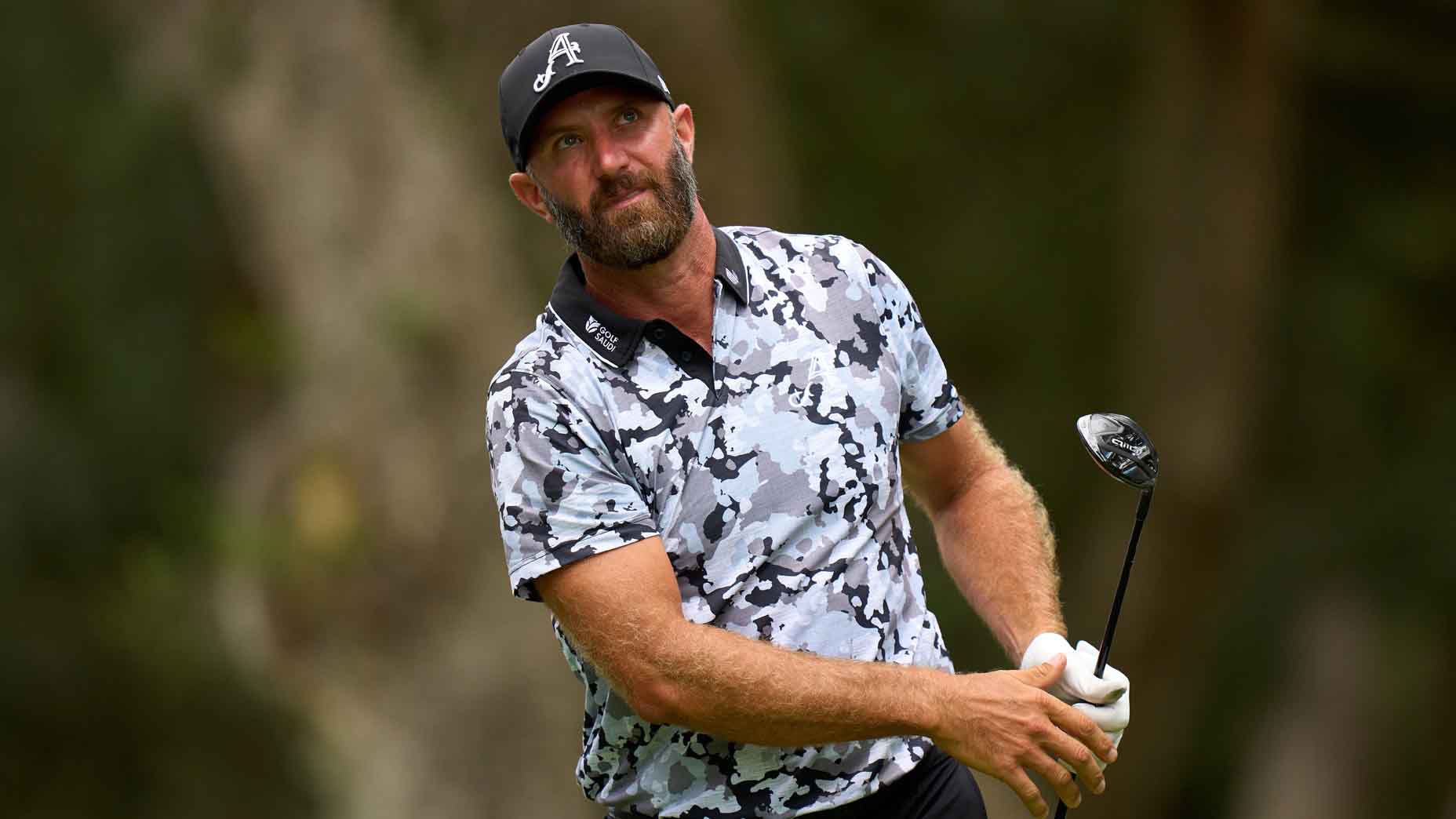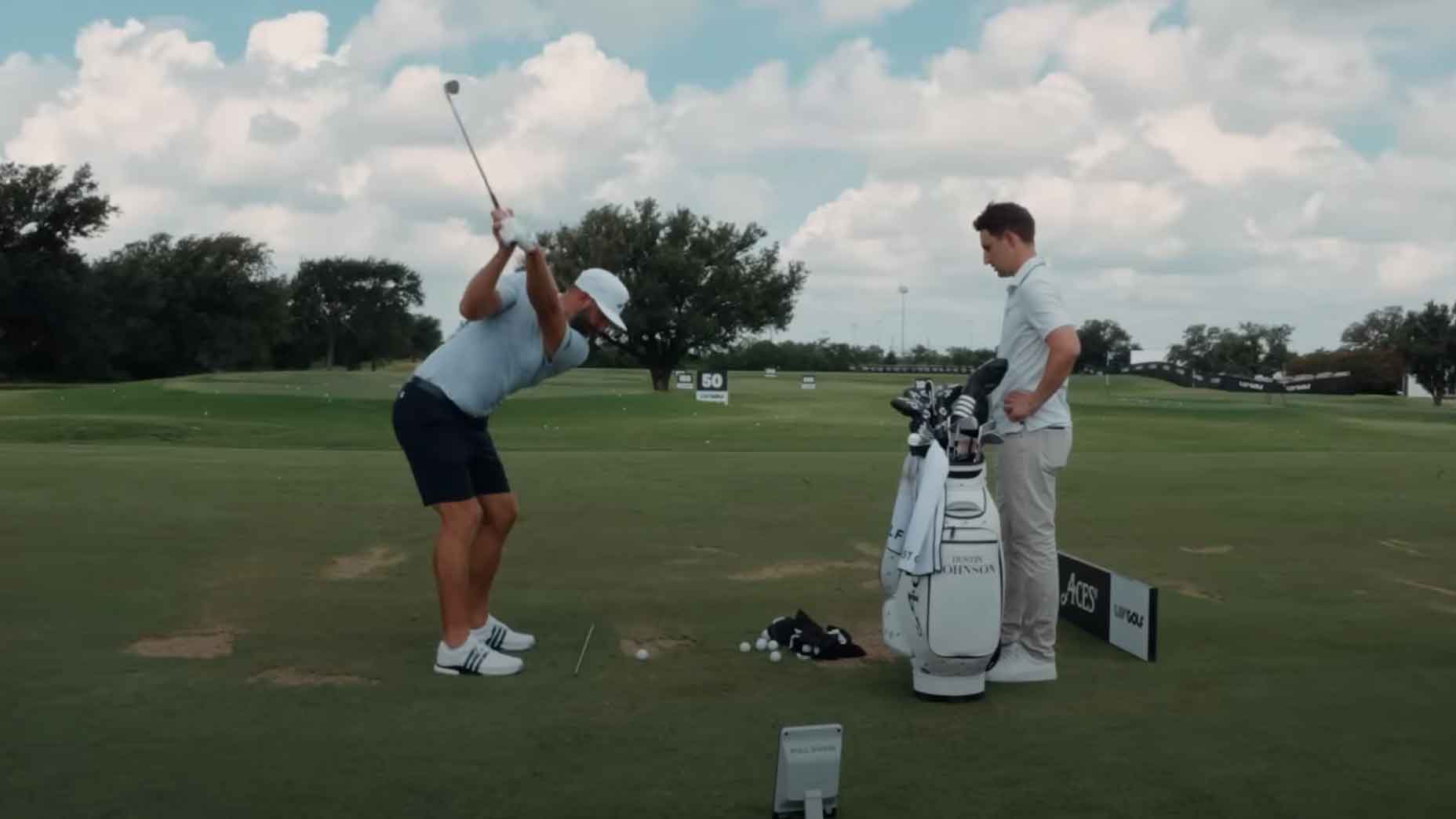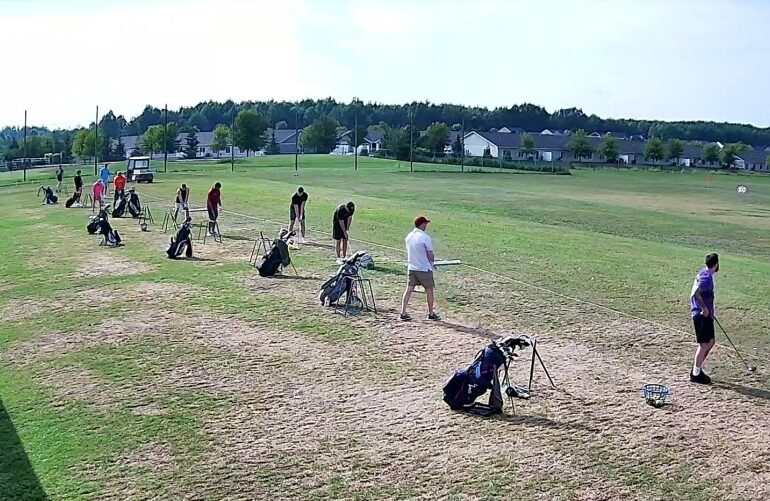What was it like to have Dustin Johnson on the latest episode of “Warming Up“? It was cool to hear directly about the process behind one of the greatest players of his generation. It was also a real golf thrill to watch one of the greatest drivers of the modern era tee a few high and let ’em fly. But mostly what’s impressive about Dustin Johnson in person is just how comfortable he seems being…Dustin Johnson. That meant he answered every question earnestly and thoughtfully but also without any pretense or performance. Johnson doesn’t care what you think about him, and he definitely doesn’t care what I think about him, and there’s something admirable in that.
For our purposes, it also means you can learn a thing or two. Here are five pieces of wisdom from a half-hour session with the former World No. 1:
1. He’s not afraid of a pre-round workout.
It’s no surprise to hear Johnson gets a proper warmup in the gym pre-round. But I was intrigued by his admission that he’ll put in two-a-days for a later afternoon tee time.
“Obviously if it’s Sunday and I’m in one of the later groups, we’re going off pretty late,” he said. “So yeah, I’ll probably have already done a workout and then I’ll get to the course and I’ll do like a warmup again, back in the gym for, like, 20 minutes, just get the body moving and firing.”
Again, this isn’t shocking to hear from one of the world’s most famously athletic golfers. But in the context of golf history — and the relatively short timeframe golfers have actually acted like athletes — it’s a reminder of just how far pros have come.
“>
2. He leans on a simple wedge drill.
First of all, I like Johnson’s old-school wedge gapping: 60-degree, 54-degree, 48-degree. No need for a gap wedge if you don’t have a gap!
“For a little while, I switched and went 46, 50, 54, [60],” Johnson said. “But I’ve been playing like this since I was a kid, I think. … And I just switched back a month or two ago. So I tried it for like a year. It didn’t work.”
What has worked, though, is dialing in the details. That means hitting three different wedge shots with each club.
“I kind of have three shots with each wedge, like a half, a three-quarter and a stock,” Johnson said. “I’ll work through those with all three of my wedges.” On this day at LIV Golf’s Dallas stop, his half-60 went 85 yards, his three-quarters-60 went 95 and his stock 60 went 105.
Johnson didn’t use a launch monitor growing up (nobody did at the time), but as he’s gotten more into the data he’s focused particularly closely on calibrating these wedge shots.
“For me, that was probably the biggest difference was just getting instant feedback,” Johnson said. That freed him up to lay back on certain holes; he cited a different strategy for a second shot on a par-5.
“Instead of just blasting it down as close to the green as possible, I would lay it up to like 85, 95 or 105, depending on the flag. Suddenly, you know that there’s something there, instead of like a 40- or 50-yard shots from pushing up and then a lot of times you get stuck to flags where you got to hit a perfect golf shot to get it close. Yeah. So it made things a lot easier.”
3. He thinks studying video has its limits.
I asked Johnson whether he feels like his swing has changed much over the years.
“No, I mean, it hasn’t,” he said, after a pause. “I look at old videos and videos now and they all look [the same]. Obviously videos from when I’m swinging really well and playing really well to when I’m struggling, and I compare them and they don’t really look any different.”
This checks out; in general when I watch my own swing on video I can only really separate the best shots from the worst if I can see where the ball goes (or watch disappointment and frustration wash over my face). So what to do about it?
“That’s the thing, y’know, there’s such little small differences that make huge impacts on what you’re doing. So that’s why repetition and always trying to hit numbers and things is generally what helps me the most.”

Dustin Johnson’s ‘frustrating’ search might be finally ending at perfect time
By:
Josh Schrock
4. He’s hunting max distance on the range — for a good reason.
Just before this session with Johnson, I’d had a conversation with Louis Oosthuizen, who told me he hits it much further on the course than he does on the range. Johnson agreed — sort of. He doesn’t believe in the magic of the golf course allowing you to suddenly smash your personal ball speed record, but he does believe in preparation.
“I always try to hit some, like, try to smash it. Just hit as far as I can with each club just to know what my max numbers are.”
I pushed back wondering if it’s possible to elevate from that max during tournament play just because you’re charged up. DJ wasn’t buying it.
“I think that goes back to knowing what your max distance is, because if you know your max distance, you can’t hit it any further than that,” he said, then added this gem: “You’re not hitting it any further; there’s only so far you can hit it.”
Okay, what about down the stretch in the situation he described, in contention the last couple holes, adrenaline pumping, feeling good, confidence high — surely there’s another level you can access?
“Well, there is, but that’s why you try to access that on the range,” he said.
Case closed.
5. He’ll tell you how to hit the fade. (He’s just better at it than you are.)
There’s an old viral clip of Johnson talking about hitting a fade in which he says essentially that when you’re trying to hit a fade, the most important thing to do is fade it. I think there’s some actual insight there — if you’re hitting the fade, hit the fade! that’s what matters — but mostly it’s a funny clip that Johnson admits he still hears about all the time. So how does he hit a fade?
“My first eight years on Tour I played a draw,” Johnson says. “I used to draw everything, I wouldn’t hit a fade unless I had to like, go around the tree or something. And working with Butch [Harmon], the first four years together we worked on hitting fades we worked on hitting fades but still would never hit one [on the course].”
Johnson remembers one BMW Championship where he debuted the secret-weapon fade in a big moment down the stretch. So how does he do it? No surprise here but Johnson makes it sound pretty simple.
“I set up feet a little bit open. Club at the target. I’ll take it back on my feet line. And then release it to the target.”
I asked for some clarification on what “release it to the target” actually means, to which Johnson essentially shrugged. “I’ll take it a hair outside and then I’ll just release it to the target.”
Fair enough.
You can watch the interview in its entirety here or below.
“>

Dylan Dethier
Dylan Dethier is a senior writer for GOLF Magazine/GOLF.com. The Williamstown, Mass. native joined GOLF in 2017 after two years scuffling on the mini-tours. Dethier is a graduate of Williams College, where he majored in English, and he’s the author of 18 in America, which details the year he spent as an 18-year-old living from his car and playing a round of golf in every state.






